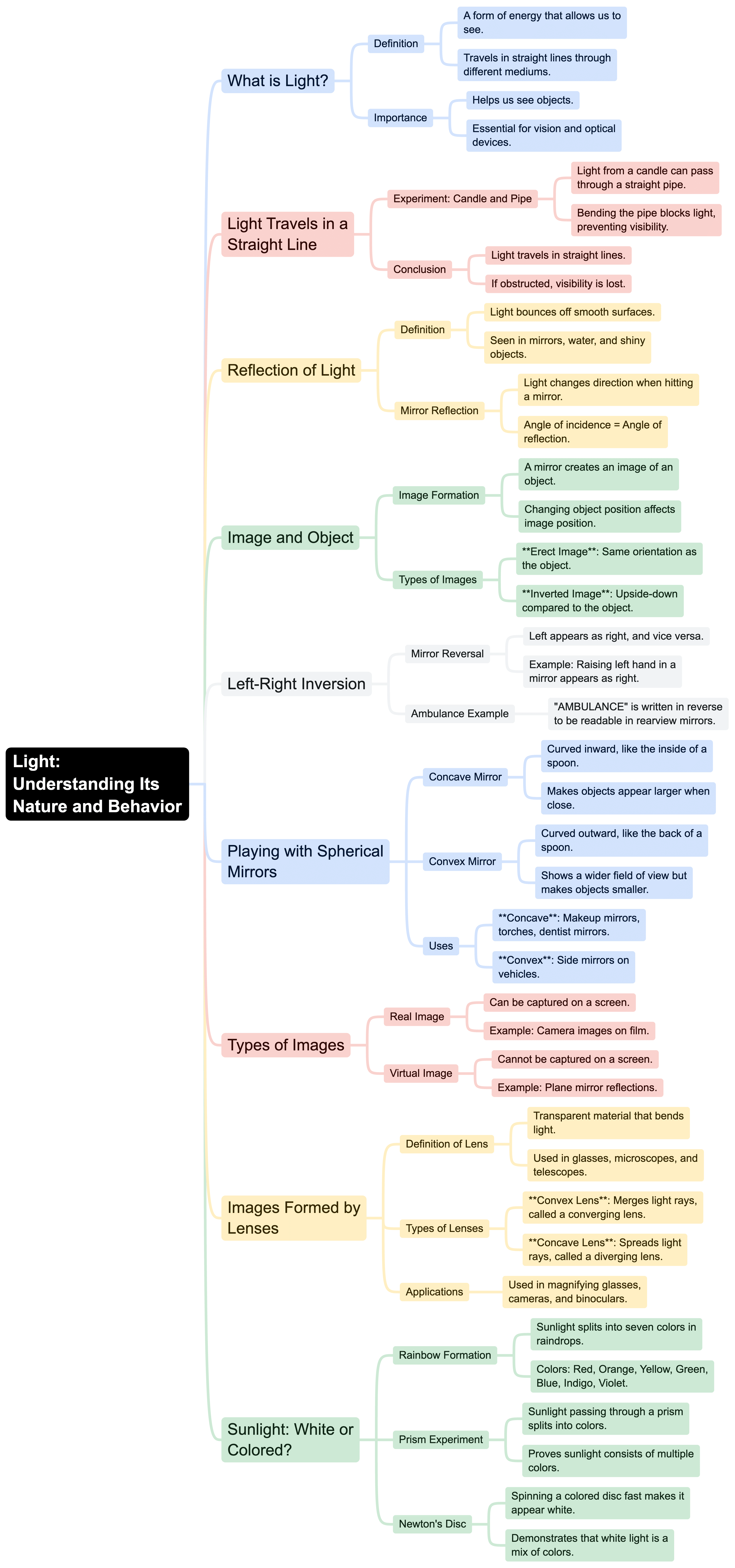UPSC Exam > UPSC Notes > Famous Books for UPSC Exam (Summary & Tests) > Mind Map: Light
Mind Map: Light | Famous Books for UPSC Exam (Summary & Tests) PDF Download

The document Mind Map: Light | Famous Books for UPSC Exam (Summary & Tests) is a part of the UPSC Course Famous Books for UPSC Exam (Summary & Tests).
All you need of UPSC at this link: UPSC
|
743 videos|1444 docs|633 tests
|
FAQs on Mind Map: Light - Famous Books for UPSC Exam (Summary & Tests)
| 1. What is light and how does it travel? |  |
Ans.Light is a form of electromagnetic radiation that is visible to the human eye. It travels in waves and can move through a vacuum at a speed of approximately 3 × 10⁸ meters per second. Light can also travel through different mediums such as air, water, and glass, but its speed varies depending on the medium.
| 2. What are the different properties of light? |  |
Ans.Light has several key properties, including reflection, refraction, dispersion, and absorption. Reflection occurs when light bounces off a surface, while refraction happens when light changes direction as it passes from one medium to another. Dispersion is the splitting of light into its component colors, and absorption is when light is absorbed by a material, converting it into other forms of energy.
| 3. What is the difference between reflection and refraction of light? |  |
Ans.Reflection is the bouncing back of light when it hits a surface, such as a mirror. The angle of incidence is equal to the angle of reflection. Refraction, on the other hand, involves the bending of light as it passes from one medium to another due to a change in speed. This bending causes objects submerged in water to appear closer or distorted.
| 4. How do prisms work to separate light into different colors? |  |
Ans.Prisms work by refracting light at different angles based on the wavelength of each color. When white light passes through a prism, it is bent, with shorter wavelengths (like violet) bending more than longer wavelengths (like red). This separation leads to the formation of a spectrum, displaying a range of colors from red to violet.
| 5. What are the different sources of light? |  |
Ans.Sources of light are typically classified into natural and artificial sources. Natural sources include the sun, stars, and fire, while artificial sources encompass light bulbs, neon signs, and lasers. Each source produces light through various processes, such as nuclear fusion in stars or incandescence in light bulbs.
Related Searches
















